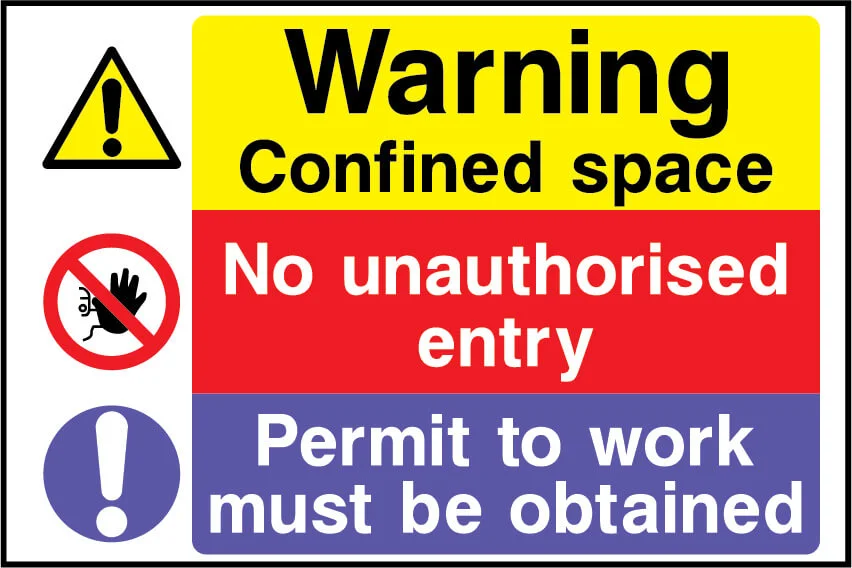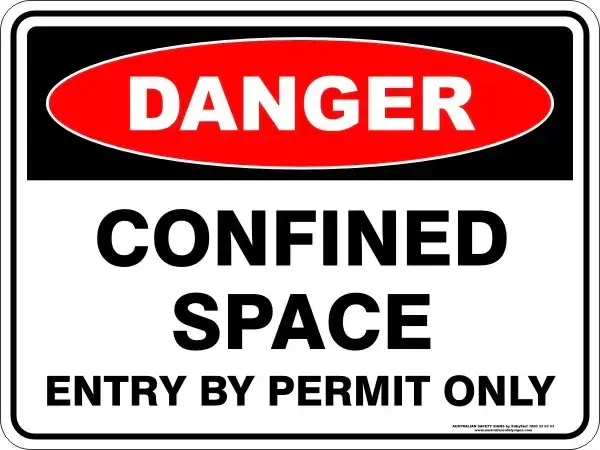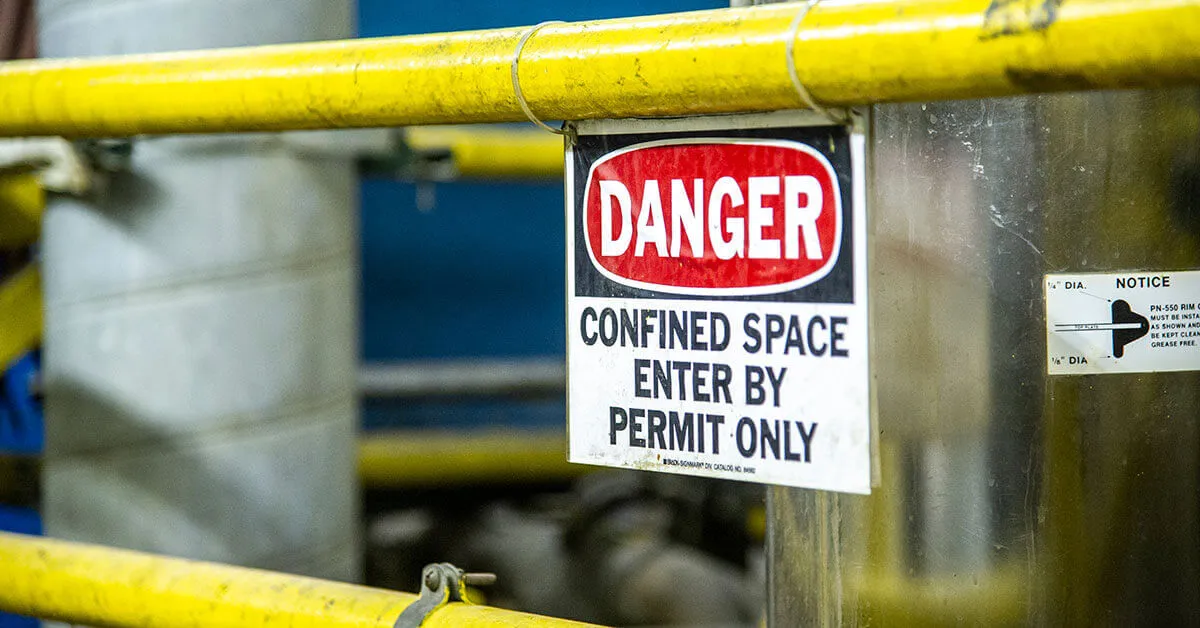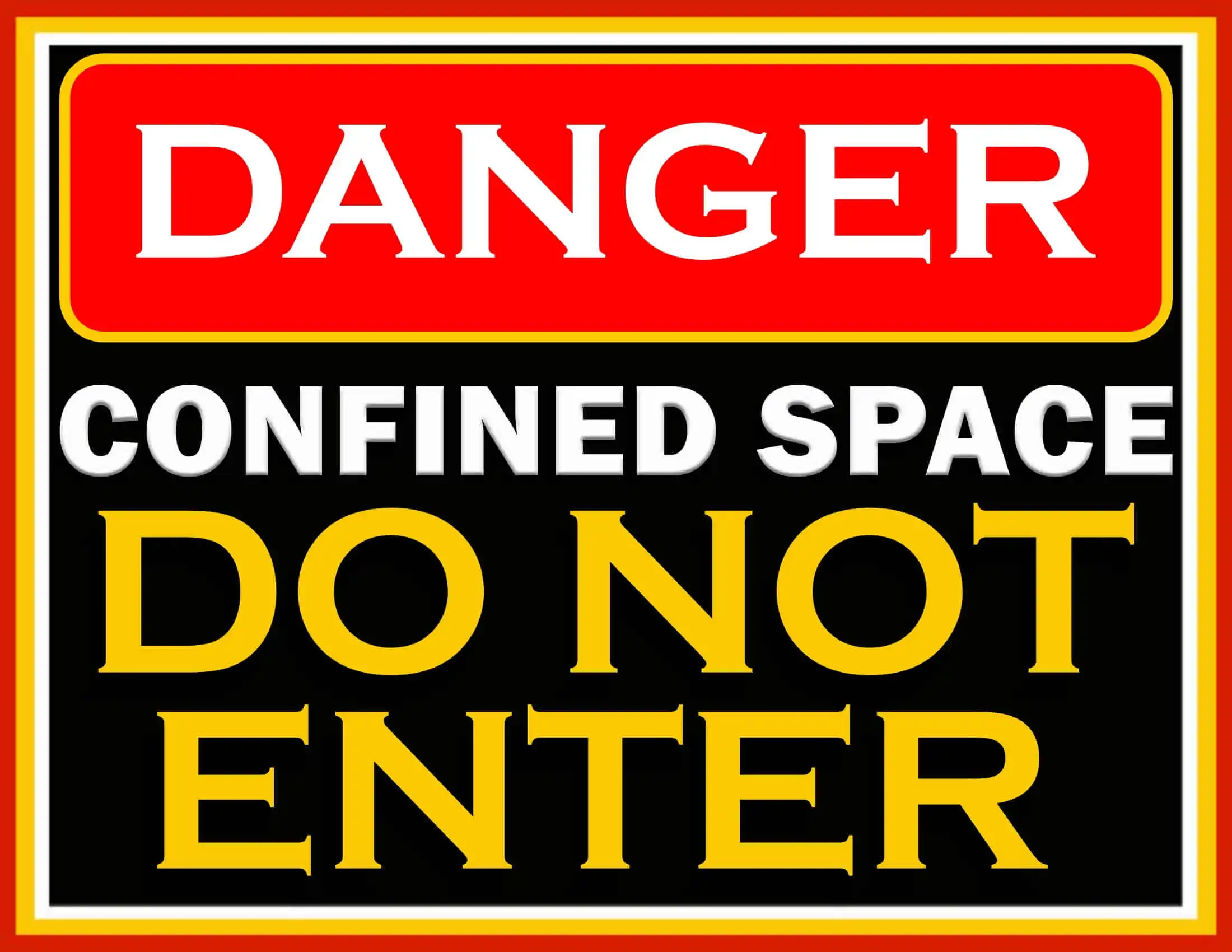Working in confined spaces can be hazardous and challenging, but it is necessary for many industries, from construction to manufacturing. A confined space is an enclosed or partially enclosed area with limited space and restricted access, which can pose significant risks to workers. These spaces may contain hazards such as toxic gases, flammable substances, or insufficient oxygen levels.
Therefore, it is essential to understand the definition of a confined space and the different types and examples of confined spaces to mitigate the risks and ensure worker safety.
In this article, we will delve into the definition of a confined space and explore the various types of confined spaces, including non-permit-required confined spaces, permit-required confined spaces, restricted spaces, elevated confined spaces, and mechanical spaces. We will also discuss examples of confined spaces, such as tanks, silos, pipelines, tunnels, storage bins, boilers, sewers, underground vaults, and flues.

What Is A Confined Space?
A confined space is an enclosed area with limited space, making it difficult for individuals to move around freely. These spaces typically have limited access points and may pose a hazard to individuals entering or working within them.
What Makes A Space Confined?
A space is considered confined when it meets the following criteria:
- It is not designed for continuous human occupancy.
- It has limited means of entry and exit.
- It is large enough for a person to enter and perform work.
- It has limited or restricted ventilation.
The characteristics of a confined space include:
- Limited access points: Confined spaces typically have only one or a few access points, making it difficult to enter or exit quickly in an emergency.
- Limited ventilation: Confined spaces may have limited ventilation, which can cause the accumulation of hazardous gases or fumes.
- Limited space: Confined spaces are usually small, making it difficult for workers to move around or escape in an emergency.
- Presence of hazards: Confined spaces may contain hazards such as toxic gases, flammable substances, or insufficient oxygen levels, which can pose a risk to workers entering the space.
Different Confined Space Examples:
Here are some examples of confined spaces:
- Tanks and vessels are large containers for storing liquids or gases. Workers may need to enter these spaces for maintenance or cleaning.
- Silos: These are tall structures used for storing bulk materials, such as grain or cement. Workers may need to enter these spaces to remove or add materials or to perform maintenance or repairs.
- Pipelines are long, narrow tubes that transport fluids or gases over long distances. Workers may need to enter these spaces for maintenance or repairs or to install new pipelines.
- Tunnels: These are underground passageways used for transportation or utility purposes. Workers may need to enter these spaces to perform maintenance or repairs or to install new utilities.
- Storage bins: These are containers for storing bulk materials, such as grains, chemicals, or coal. Workers may need to enter these spaces to remove or add materials or to perform maintenance or repairs.
- Boilers: These are devices used for generating steam or hot water for heating or power generation. Workers may need to enter these spaces for maintenance or repairs.
- Sewers: These are underground channels that carry wastewater or stormwater to treatment plants or discharge points. Workers may need to enter these spaces for maintenance or repairs.
- Underground vaults: These are underground chambers used for storing equipment, such as transformers or switches, for electrical distribution systems. Workers may need to enter these spaces for maintenance or repairs.
- Flues: These channels carry gases, such as smoke or exhaust, from a furnace or other combustion device to the outside. Workers may need to enter these spaces for maintenance or repairs.

Types of Confined Spaces
There are several types of confined spaces, each with hazards and risks. Here are some common types of confined spaces:
1. Non-permit required confined spaces
These spaces meet the definition of a confined space but do not contain any recognized serious hazards. Examples of non-permit-required confined spaces include small storage areas, attics, and crawl spaces. Although these spaces do not pose significant risks, workers entering these spaces still need to follow certain safety protocols, such as using personal protective equipment (PPE) and communicating with a designated attendant.
2. Permit-required confined spaces
These spaces contain one or more recognized serious hazards, such as the potential for hazardous atmospheres, engulfment, or entrapment. Examples of permit-required confined spaces include tanks, silos, and sewers. Before workers can enter a permit-required confined space, the employer must develop and implement a written permit program that outlines the procedures for safe entry and exit, identifies the potential hazards, and specifies the control measures that must be used to ensure worker safety.
3. Restricted Spaces
These spaces are designed for limited human entry and have specific access requirements. Examples of restricted spaces include elevator shafts, chimneys, and small crawl spaces. Restricted spaces may be non-permit or permit-required confined spaces depending on their risk level.
4. Elevated confined spaces
These spaces are located above ground level and can be accessed only by ladders, stairways, or elevators. Examples of elevated confined spaces include roofs, towers, and elevated platforms. Workers entering elevated confined spaces must follow specific safety protocols, such as using fall protection equipment and being aware of the potential for slips, trips, and falls.

5. Mechanical Spaces
These spaces contain mechanical equipment that requires maintenance or repair, such as HVAC systems, boilers, and turbines. Depending on their risk level, mechanical spaces may be either non-permit or permit-required confined spaces. Workers entering mechanical spaces must follow specific safety protocols, such as locking out and tagging out the equipment and following specific procedures for safely entering and exiting the space.
Confined Space Signs
Confined space signs are crucial in alerting and educating workers and other individuals about the potential hazards they could encounter when entering these areas. They help prevent unauthorized access and ensure proper safety precautions are followed.
Here are some common elements and examples of confined space signs:
- Warning Text: Most signs will have bold and clear text stating “DANGER” or “WARNING” followed by the phrase “CONFINED SPACE.” This conveys the immediate risk associated with the area.
- Identification of Hazards: Many signs will also detail the specific hazards that may be present, such as “HAZARDOUS ATMOSPHERE” or “RISK OF FALLING OBJECTS.”
- Access Restrictions: The sign may state “AUTHORIZED PERSONNEL ONLY” or “PERMIT REQUIRED,” indicating that only trained and authorized individuals should enter the space.
- Instructions: There might be additional information or instructions, such as emergency contact numbers or the location of rescue equipment.
- Symbols: Confined space signs often include universally recognized symbols to visually represent the warning. For example, an exclamation mark inside a triangle to signify general danger.
- Regulatory Compliance: In many jurisdictions, confined space signs must adhere to specific regulations, guidelines, and standards. They must be clearly visible, legible, and located at all entry points to the confined space.
- Color Codes: Confined space signs often use a specific color scheme, such as red, yellow, or orange, to grab attention. The use of color is intended to signal caution or danger even from a distance.
- Use of Languages: In areas where multiple languages are spoken, signs might include translations to ensure that all potential entrants understand the warnings.
By providing clear and concise information about the potential dangers of a confined space, these signs serve as an essential tool in workplace safety. They ensure that workers and others in the vicinity are informed about the risks and that proper protocols are followed to minimize accidents and injuries.
Conclusion
A confined space is a hazardous area with limited access and restricted ventilation. These spaces pose serious risks to workers, and it’s crucial to understand the different types of confined spaces and their associated hazards. Some examples of confined spaces include tanks, vessels, silos, sewers, and tunnels.
Employers are responsible for identifying and assessing confined work spaces and implementing appropriate safety measures to protect workers. Workers must receive adequate training and equipment to work safely in confined spaces. By understanding the hazards associated with confined spaces and taking appropriate safety measures, employers can ensure their workers remain safe and healthy on the job.












